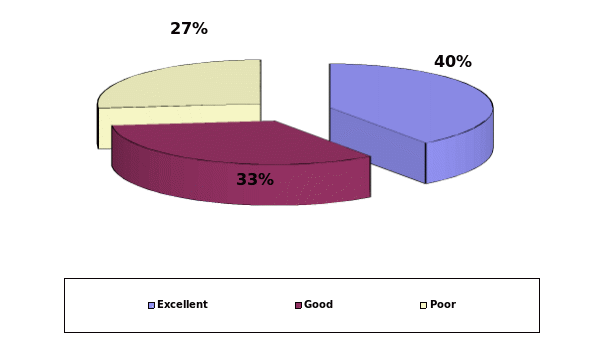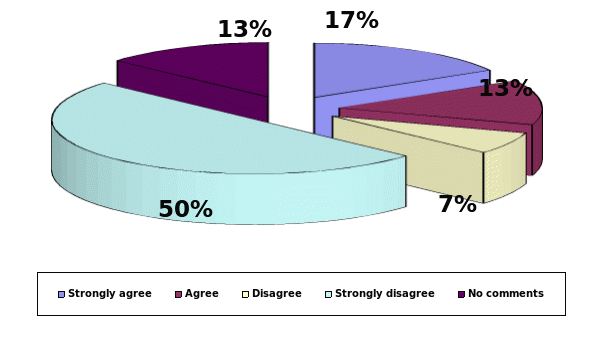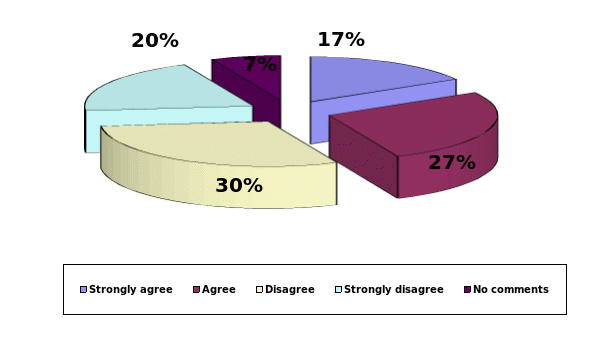Executive Summary
Employee assessment is a must for each and every organisation. Appropriate and impartial assessment of employees is essential in order to get maximum output from them. Human resources department is extremely critical for organisations because effective achievement of human resources policies can be helpful in realising organisations’ goals with the help of employees’ performance. Such assessment can be made possible by efficient utilisation of performance management and evaluation systems. The fundamental goal of performance management system rests in appropriate utilisation of the available resources.
Appropriate execution of performance assessment can be instrumental in teaching the employees about the importance of better performance. Performance assessment of employees additionally demonstrates the way to the development of employees to attain the organisations’ goals. By conducting such assessments, organisations can come to know about the problems being faced by their employees and remedial actions can be taken in order to put an end to such problems that may hinder the organisations’ progress.
This specific procedure will assist the workers in becoming aware of problems being faced by them and at the same time identify their potentials and work towards the organisations’ better performance. Performance assessment also includes proper and timely training of employees so that they can be a part of the assessment. In order to boost the morale of employees, a suitable rewards programme, based on employees’ performance in the assessment, is advisable.
By following such a practice, employees are bound to be motivated and work towards achieving the organisations’ goals. Such rewards can be in the form of either cash or kind. Cash reward might include a raise in salary or one time incentives. Rewards other than cash can be in the form of promotions. Different performance assessment systems can be possible, depending on the priorities of higher authorities. Performance assessment needs to be done on an individual basis so that all employees are aware of their strengths and weaknesses. Finally, performance assessment can be helpful in attainment of organisational objectives.
Introduction
Organisational theory has great benefits when it comes to functioning of a business. Employees strive hard to stick to such theories in order to perform better and become successful in achieving their goals; ironically, this might require the employees to compromise with their own principles. Some managers would want to make certain changes in the policies that might have a long-term effect (like financial managers), while others would like to change the policies on a daily basis (like human resources managers).
The problem is that in following the set principles and policies, employees get so involved that they might (unwillingly though) ignore other areas of business. Also, there might be instances where employees don’t feel comfortable with the policies (due to their difference of opinion) but since they have to work according to the organisational culture, they have to let go their own feelings. Sometimes it becomes difficult to execute the organisational theory because there is no consideration of the employees’ psychology while making the policies.
Purpose
The purpose of this study is to understand the link between performance management and career development and how it is applied within HSBC Bank plc.
Rationale
In any organisation, career training equips employees with the requisite skills and knowledge that enable them to do their present job competently and achieve a high performance. Investment in training is often associated with improved productivity and a better competitive advantage for a firm operating in a particular industry (Tobias & Fletcher, 2001).
While the primary area of this study’s examination lies within strategic management of human resources and expectations of policy application, the researcher will look into the extent of achievement of human policy rather than the effect on productive output. The paper aims at examining the HR policy of HSBC Bank plc in quest to achieve its strategic plans. This report explores the assumptions made by academic authors in their effort to determine the effectiveness of human resource policies of HSBC Bank plc.
The research objectives will be reframed as testable hypothesis following more work on literature review. Comparison of the results with the existing body of knowledge in published literature will broaden the interpretation. Deductive research approach is preferred to review, gather information, and draw conclusions in order to support the findings (Levi, 2012; Filliâtre, 2011).
Literature Review
Human resource policies are codified decisions that an organisation establishes to support its administrative personnel’s functions, employee relations, performance management, and management resource planning. The related design is believed to improve the competitive nature of an organisation (Budhwar & Mellahi, 2007). Human resource department of any organisation plays a vital role in the development of a healthy national economy. According to Al-Hamadi, Budhwar and Shipton (2007), human resource departments play vital roles in modern corporations.
They determine how productive the organisation will be in its market or whether the objectives will be met or not. Microsoft Incorporation’s example is apt at this juncture; the company began its operations in the U.S. market from nowhere, to being an economic powerhouse (Priyadarshini, 2009). Therefore, it would be beneficial for any country if job satisfaction concerning human resource policies could be measured (Al-Yahya, 2010). Considering such aspects, it becomes mandatory for any researcher to contribute towards knowledge by determining job satisfaction regarding HR policy and to suggest effective professional solutions (Harry, 2007).
In any organisation, career training equips employees with the requisite skills and knowledge that enable them to do their present job competently and achieve a high performance. Investment in training is often associated with improved productivity and a better competitive advantage for a firm operating in a particular industry (Tobias & Fletcher, 2001).
It nurtures an environment of creativity and innovation and creates more opportunities for organisational growth. In recent years, performance management has become an important career development tool in most companies’ human resource practices. Career development tools is significant for the HR process because the financial and program components are affected (Jafari, Bourouni, & Amiri, 2009, p. 96). Employee assessment is a significant part of performance management. Assessments help organisations manage their human resource in a manner that meets its objectives and mission. An appraisal also gives each employee an opportunity to assess his/her performance and identify areas for improvement.
Performance management is a complex human resource function. It entails the identification of each employee’s skill deficits for purposes of further training and development. It can serve as a tool for employee development, strategic planning, or both. With regard to employee development, performance appraisal reveals the strengths and weaknesses of the staff, which can be used to identify its training needs. Under some circumstances, performance management can be used as a strategic planning tool.
However, due to discrepancies associated with appraisers’ judgment, evaluation, and cognition, it is rarely used in strategic planning (Prowse & Prowse, 2009). Nevertheless, a proper appraisal system is important in employee training and development. This paper critically analyses the links between performance management and career development systems. It also illustrates the relationship between the two systems in HSBC Bank plc.
In organisations (especially large ones), the employees contribute immensely towards the performance and reputation. It is the employees who deal with the vendors, buyers, and other stakeholders of the organisation. So their behaviour has a great impact on the organisation’s performance and image. Hence it becomes imperative to keep the employees happy and content.
The leaders should evolve new methods and strategies to infuse enthusiasm in the employees. Individual contact with all employees is a must in order to make them feel wanted. The salary structure and the leave sanctions also have a great emotional and psychological effect on the employees. The organisation’s success is directly proportional to the satisfaction of its employees. If the employees are satisfied, they will send positive messages to the outside world and hence improve the organisation’s image.
Methodology
The methodology will involve collection of secondary data from the HSBC Bank pls. Other sources of data collection are published and unpublished materials such as articles, business journals, newspapers, and periodicals. Primary data collection will be in completion with the help of interviews and questionnaire responses from employees and key stakeholders in public, semi-private, NGO sectors. The researcher will develop a rationale while choosing HSBC for the proposed survey. According to Jacob (2012), a minimum sample size of 30 is appropriate.
Draxler (2010) estimates an approximate response rate of 30 per cent, which gives a sample size of 100 respondents. The questionnaires will be either closed or open-ended (to be decided). In order to carry out data collection, a proper official permission to organisations will be obtained by the researcher. No information collected will be disclosed to any third party.
For the purpose of this research, interviews will be considered as primary source of information. Interviews are supposed to be authentic sources of information as the data collected is instantaneous and unbiased (because the identity of interviewees in not disclosed and as such they can express their views freely, without any fear of reprimand from their superiors). The research is based on the human resources department of HSBC Bank plc. Since HSBC Bank plc is one of the major global banks, there should not be any problem in getting the required data. The researcher will be able to get the required information during the research and use it accordingly in order to get the desired results.
The researcher will gather the required information by way of interviews since this particular technique has greater reach (maximum respondents can be approached). There are several benefits of interview technique, a couple of them are mentioned below:
- The results will not be affected by time and monetary aspects.
- The selected sample size will suffice as representative of the complete populace.
- The sampling technique will facilitate accurate answers to the questionnaire.
The questionnaire for the research can be viewed at appendix 1. The results of the survey (closed ended questions) are depicted in the following pie charts:
How, according to you, is employee motivation in your organisation?

When employees of HSBC were asked about motivation within the organisation, there was a mixed opinion. While 40 percent of the respondents had excellent views about employee motivation, 33 percent said it was good. The remaining 27 percent of respondents were of the opinion that employee motivation was poor and not up to the mark.
Likewise other banks, HSBC Bank plc is also considered to be a service industry where customers are considered to be of great importance. It seems that the bank is not paying much attention towards employee motivation and even if there is some attention, probably it is for the selected ones (those who had excellent and good opinions). The bank needs to consider all its employees while starting any motivational programmes.
What is your work strategy?

The results of the questionnaire suggest that there is a team culture within the HSBC Bank plc. 52 percent of respondents agreed that they worked in a team structure. On the other hand, 38 percent respondents were of the opinion that they worked in order to achieve targets. The remaining 10 percent respondents, who said that they worked at their own pace, irrespective of any target, are probably those who work at cash counters. It is encouraging to note that HSBC Bank plc has a team culture.
Does your organisation follow employee best practices?

HSBC Bank plc is a multinational organisation where global standards are supposed to be practiced. Employee best practices are global standards that need to be followed by the bank. Unfortunately, as per the employees’ opinion, the bank lags behind in this aspect. While 33 percent of respondents were of the opinion that employee best practices were not at all followed within the bank, only 27 percent were in favour. If replies to “strongly agree” and “agree” are clubbed (total: 37%), the result is far less than the combined results of “strongly disagree” and “disagree” (total: 60%).
Is your organisation employee-centric?

As mentioned above, banks give utmost importance to their customers. As a result, employee benefits and interests are overlooked sometimes. The results of the survey also depict similar practice within the bank. While a meagre 30% percent of respondents (strongly agree and agree) were of the opinion that their bank was employee-centric, 57 percent respondents had conflicting views.
In your organisations, promotions are made based on performance.

Replies to this question suggested that HSBC Bank plc practices red-tapism where promotions are made based on the basis of approach and other similar factors. Performance is not the main criteria for promotions. This statement was supported by the results where only 34 percent (strongly agree and agree) of the respondents considered that promotions within the organisation were done based on performance. On the contrary, 63 percent believed that there was some partiality and favouritism while deciding on promotions. This is not a good sign for a global bank like HSBC.
Are you convinced with the appraisals?

This question had mixed opinions. While 44 percent of respondents believed that the assessment was fair, 49 percent believed it to be unfair. The difference was not much, which means that assessment was fair but this does not mean that promotions are made based on performance (as depicted by the previous question). In such circumstances, there are chances that many better candidates, who do not get timely and deserved promotions, might shift to other banks for better prospects.
Performance based rewards are always better

Whatever might be the results of previous questions, most of the respondents believe that performance based rewards are always better. In comparison to 83 percent of respondents, who believed that performance based rewards are better, only 17 percent were of contradictory belief.
HSBC Bank plc should take heed from this survey and make necessary amendments in its policy as far as its employees are concerned. It is understood that customers are a source of income for banks but employees should not be considered a burden; they are also an asset.
Discussions
The process of performance management unearths an organisation’s staffing needs. It varies depending on its role in the firm and the nature of the organisation. In most organisations, it is considered a systematic interaction process between an employee and an appraiser that seeks to assess the employee’s job skills and/or inadequacies and recommend areas for career training and development. Thus, performance appraisal entails continuous review and evaluation of an employee’s performance with the aim of identifying opportunities for individual growth (Meschi & Metais, 1998).
Performance appraisals also serve as tools for measuring an employee’s progress. It is also through performance appraisal that HR managers are able to make certain personnel choices to maintain an organisation’s competitiveness and performance. Performance management can impede or promote the creation of core competencies within a firm. Such core competencies and skills set give a firm a clear competitive edge over rivals in the industry through innovation and technology (Ubeda & Santos, 2007). In this view, performance appraisal is essentially the process of assessing and developing “employees’ performance” in a firm (Ubeda & Santos, 2007, p. 91).
Most organisations consider performance management as an integral and strategic tool crucial for business success. Furthermore, in the 21st century, employee appraisal is a crucial success factor for any company. However, a faulty employee appraisal system can hinder organisational performance or growth. Such a system may not identify and evaluate each employee’s skills and match his/her competencies with job requirements. In this regard, performance appraisal is an indispensable process in the modern business environment.
Performance management has evolved to become an important tool in organisations because of people’s tendency to make judgments about themselves and others. It is an inherent human trait to judge themselves and others according to certain expected standards. However, this does not mean that the judgment is correct or unanimous to everybody involved. Soltani, Van Der Meer, and Williams (2005) attribute the inaccuracies and inconsistencies in human judgments to our differences in perception and understanding.
In this view, to be a successful appraiser, one has to learn to understand others and develop an accurate rating format. Designing an appraisal system that not only assess each employee’s performance accurately, but also fits his/her skills within the wider organisational needs is often difficult. However, such a system guarantees a firm a performance management process that meets its needs as well as those of the employees.
Employee appraisal systems are often unique and non-transferable. In this view, each organisation must design and implement a system that best matches its HR requirements and employee needs. Foong-ming (2008) notes that human resource practices that “motivate the workforce and enhance personal growth” result in improved employee performance, which translate to organisational growth (p. 12). It is evident that performance management is closely tied to employees’ career growth and development within the firm. Career development encompasses a range of training activities aimed at creating rich skills set required by an organisation. It entails formal training and work-related experiences as well as the development of an employee’s skills and natural abilities to improve his/her performance.
Given its close association with performance management, career development often involves concerted effort from the firm and the staff members. It is through this collaboration that organisations can improve each member’s abilities, knowledge, and skills to achieve a better performance in their present or future positions. Besides being a collaborative process, a career development plan must reflect organisational needs and involve an approach that serves the interests and career goals of the employee. Since both the employer and the employee benefit from the development plan, each party must play his/her role effectively. However, employers should be more proactive in providing career development opportunities to employees, since they stand to benefit from the new skills.
Employee development brings many significant benefits to the organisation. It underscores a company’s commitment to investing in staff growth by providing opportunities for career development, which brings new and advanced skills in the organisation. This translates into staff motivation, which, in turn, fosters collaboration in teams. Thus, organisational commitment towards employee training plays a role in staff motivation, which results in improved performance and workplace productivity. The development also enhances staff skills and abilities, which makes employees to perform better.
Final Recommendations
The researcher recommends that an investigation of employees’ job satisfaction, with the formulation of HR policy, should be carried out. Such investigation would determine whether or not the productivity of employees has been changed or affected by the new HR policies. The study will also reveal whether the new HR policy is able to stop migration of highly skilled employees. Further, a comparison should be done that might include the reformed government sector and other sectors in job satisfaction according to the implemented HR policy.
Conclusion
Performance management and career development are highly interconnected. Performance management encompasses appraisals, which seek to evaluate the skills, abilities, strengths, and weaknesses of employees. The outcomes of appraisals are used in training and development with an underlying aim of improving an employee’s productivity and performance. The training and development plan of HSBC entails induction, job-related coaching, and personal development. Its aim is to equip employees with relevant job skills that would make them perform better. Staff motivation is also at the centre of the company’s training programmes.
Many links are evident between the organisation’s performance management and career development plan. First, before induction or job specific coaching, performance management is used to identify the training needs of the employees and determine which plan suits them. Second, performance management helps employees set their career goals within the organisation. Third, the organisation uses performance appraisals as a tool for determining its human capacity. HSBC has used these two processes effectively to achieve greater efficiency and business success.
References
Al-Hamadi, A., Budhwar, P. S., & Shipton, H. (2007). Management of human resources in Oman. International Journal of Human Resource Management, 18(1), 100.
Al-Yahya, K. (2010). The over-educated, under-utilised public professional: Evidences from Oman and Saudi Arabia. Journal of Management & Public Policy, 1(2), 28-47.
Budhwar, P., & Mellahi, K. (2007). Future research on human resource management systems in Asia. Asia Pacific Journal of Management, 26(2), 197.
Draxler, C (2010). Sample size determination for Rasch Model Tests. Psychometrika, 75(4), 708-724.
Filliâtre, J. (2011). Deductive software verification. International Journal on Software Tools for Technology Transfer, 13(5), 397-403.
Foong-ming, T. (2008). Linking career development practices to turnover intention: The mediator of perceived organisational support. Journal of Business and Public Affairs, 2(1), 1-20.
Harry, W. (2007). Employment creation and localisation: The crucial human resource issues for the GCC. International Journal of Human Resource Management, 18(1). 132.
Jacob, W. (2012). Research Methodology. Vision, 16(1), 73.
Jafari, M., Bourouni, A., & Amiri, R. H. (2009). A new framework for selection of the best performance appraisal method. European Journal of Social Sciences, 7(3), 92-100.
Levi, I. (2012). Deductive closure. Synthesis, 186(2), 493-499.
Priyadarshini, J. (2009). Microsoft’s HR strategy – an analysis. Web.
Prowse, P., & Prowse, J. (2009). The dilemma of performance appraisal. Measuring Business Excellence, 13(4), 69-77.
(Meschi, P., & Metais, E. (1998). A socio-economic study of companies through their training policies. Management International Review, 38(1), 25-48.
Soltani, E., Van Der Meer, R., & Williams, T. M. (2005). A contrast of HRM and TQM approaches to performance management: Some evidence. British Journal of Management, 16(3), 211-230.
Tobias, G., & Fletcher, D. (2001). Training and retraining: A handbook for business, industry, government and the military. Farmington Hills, MI: Macmillan.
Ubeda, C. L. & Santos, F. C. A. (2007). Staff development and performance appraisal in a Brazilian research centre. European Journal of Innovation Management, 10(1), 109-125.
